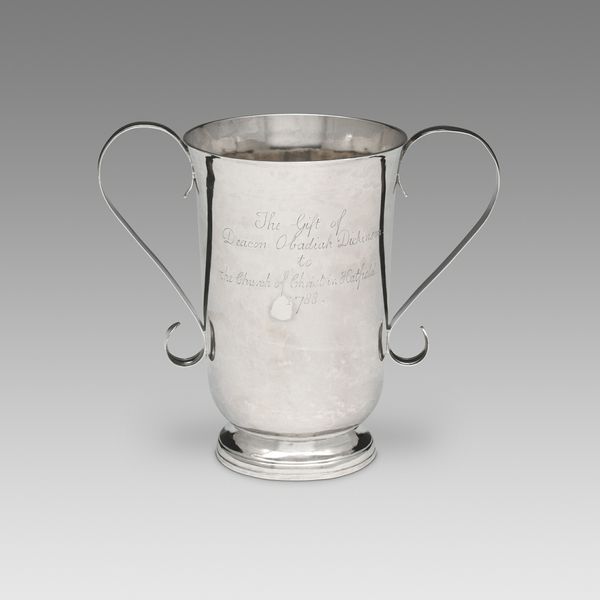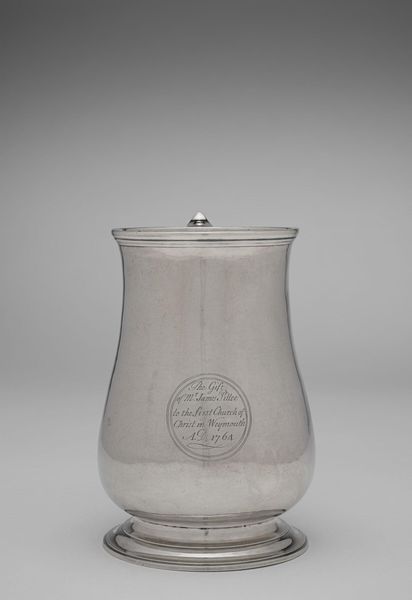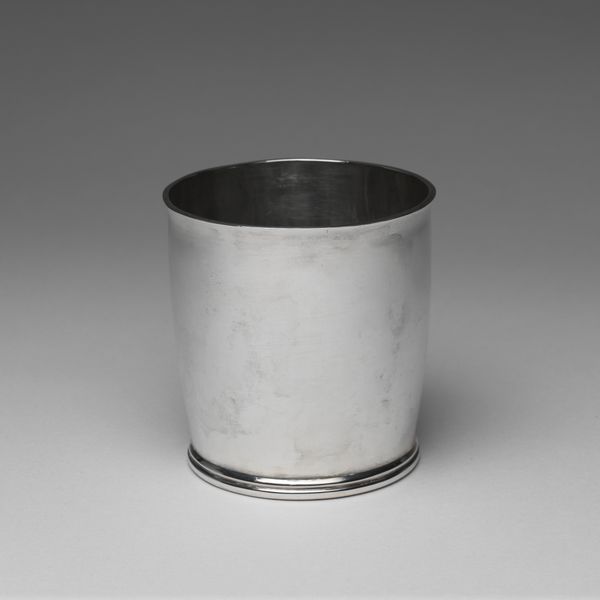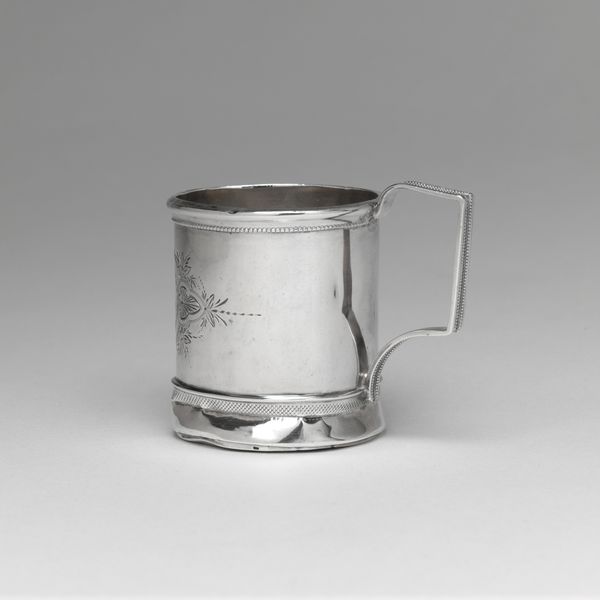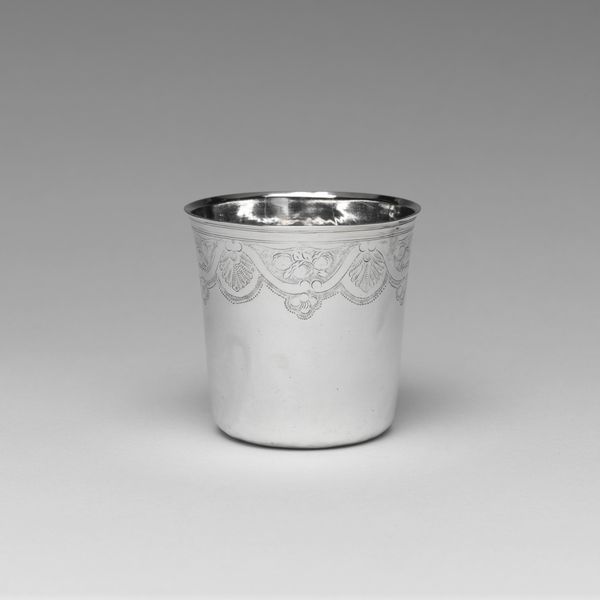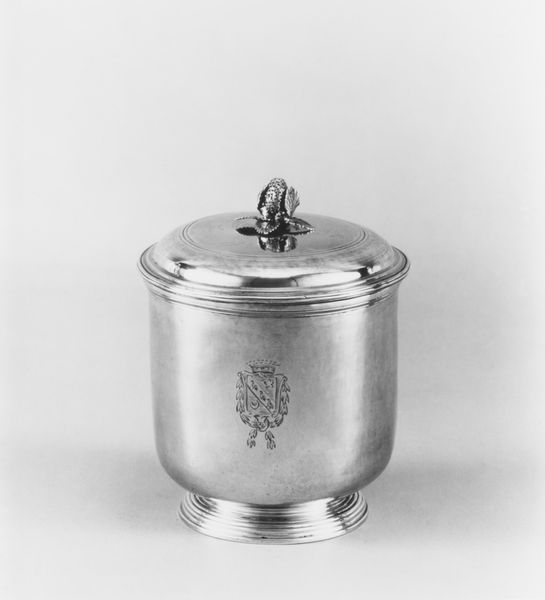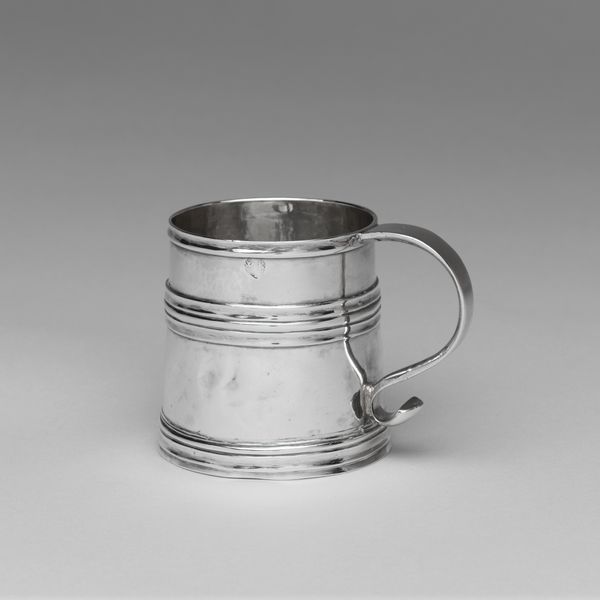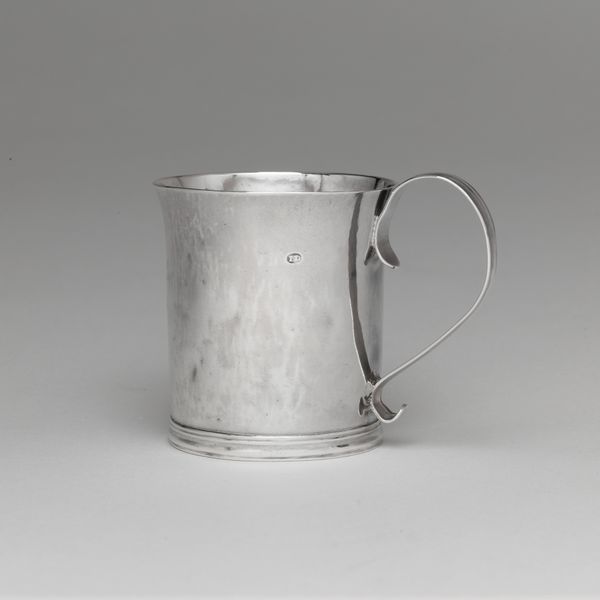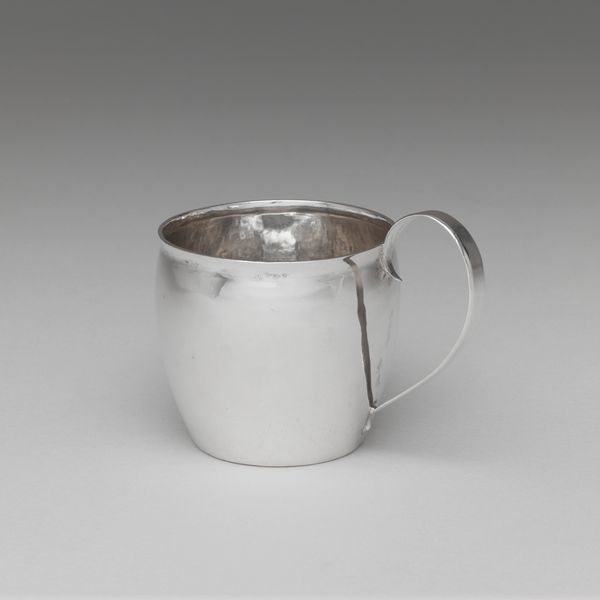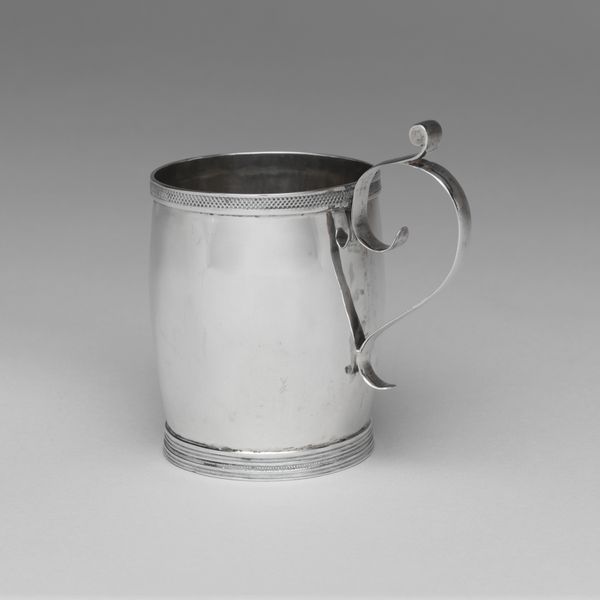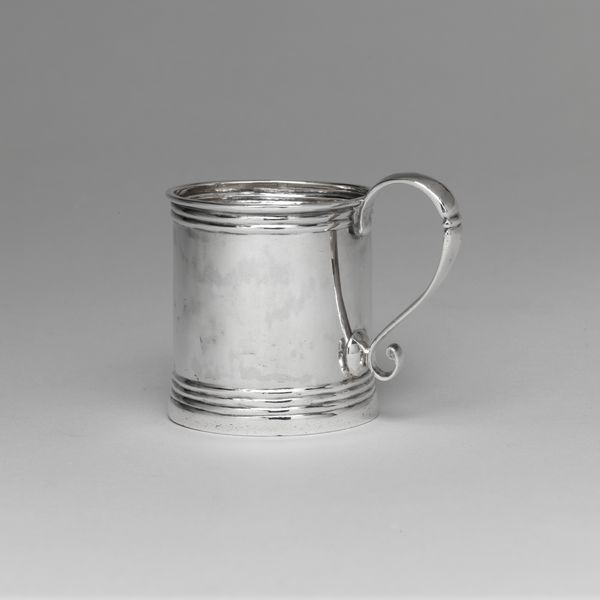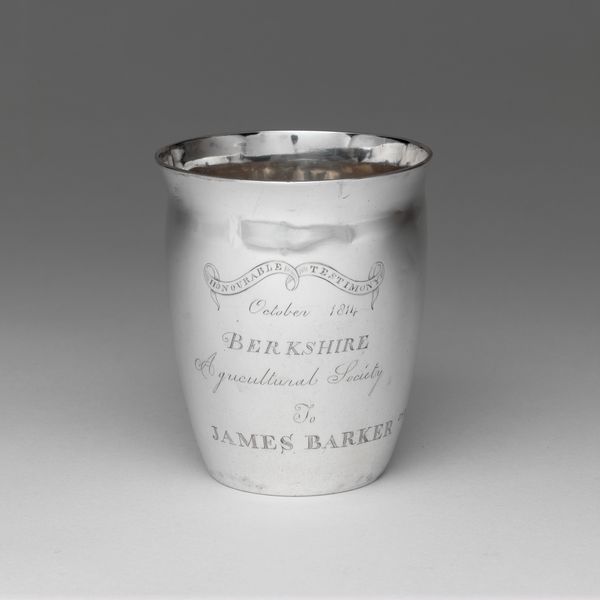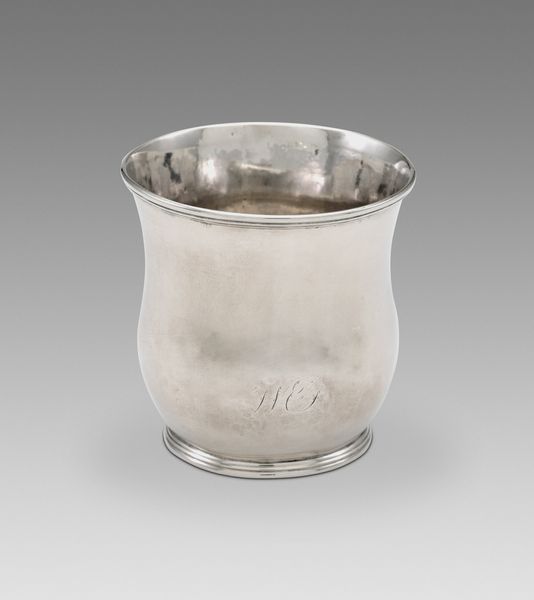
silver, metal
#
still-life-photography
#
silver
#
metal
#
ancient-mediterranean
#
united-states
Dimensions: Overall: H. 3 1/2 in. (8.9 cm); 3 oz. 2 dwt. (97 g) Base: Diam. 1 15/16 in. (5 cm) Lip: 3 1/8 x 2 15/16 in. (7.9 x 7.5 cm)
Copyright: Public Domain
Curator: The elegant, muted sheen of this "Beaker" immediately captures the eye. It was crafted between 1800 and 1830 and currently resides at the Metropolitan Museum of Art. Its smooth surfaces, made from silver and other metals, show careful craftsmanship. Editor: I see simplicity. Its plain design has an old and quiet kind of dignity. It suggests reflection. What stories could this cup tell? Curator: Consider how the craftsman emphasizes its simple form, an exercise in minimalism. There are, however, subtle but calculated deviations in its otherwise straightforward cylinder. Look at the concave shaping and rounded lip. It seems deceptively plain but demands close inspection. Editor: Absolutely. And that engraving—the inscription serves to further enhance it as more than a simple vessel. Isaac D. Verplanck Wilcocks...the piece feels incredibly personal. I see family lineage, perhaps a precious heirloom. Curator: Indeed. Inscribed names often act as important clues. Do you notice that the name on it looks old, hinting that the beaker might be for special family events or remembrance? Also note how the reflective nature of the material both catches the light and makes the writing catch the viewers' eyes, too. Editor: Yes! It links the material properties of the silver to the content of the engraving. That connection is interesting and could even symbolize purity and clarity—values linked both to silver and a clear lineage. Its symbolic properties speak of both material worth and moral character, linking this cup to ideas of historical memory and self-definition within family and community. Curator: Beautifully articulated. Studying this Beaker through iconography allows a greater insight into the artist's world—revealing its conceptual depths by linking formal design to narrative content. Editor: And looking closely, we gain appreciation not just for the physical craft but the emotional connections. It becomes a silent bridge between us and an individual of the past.
Comments
No comments
Be the first to comment and join the conversation on the ultimate creative platform.


